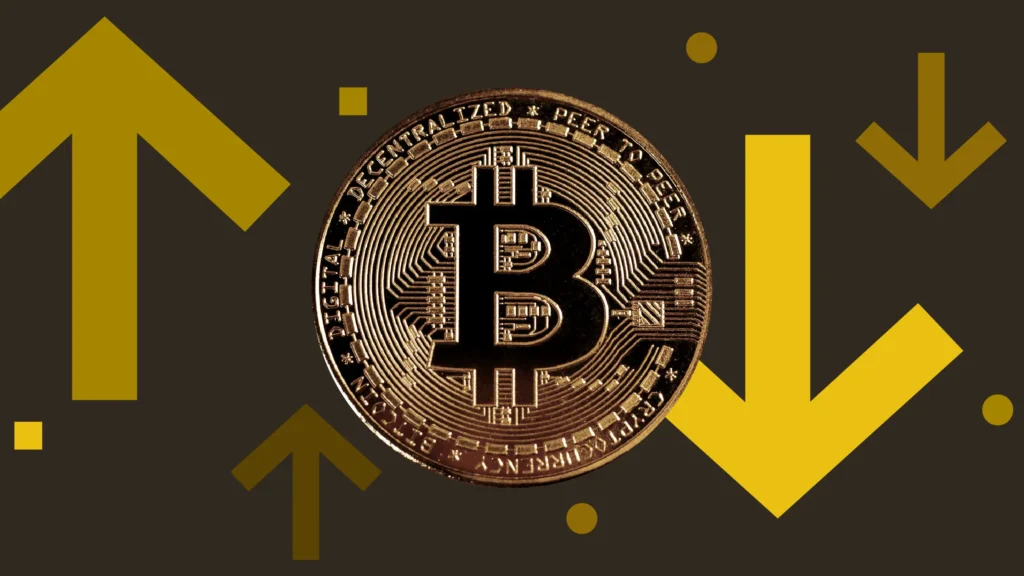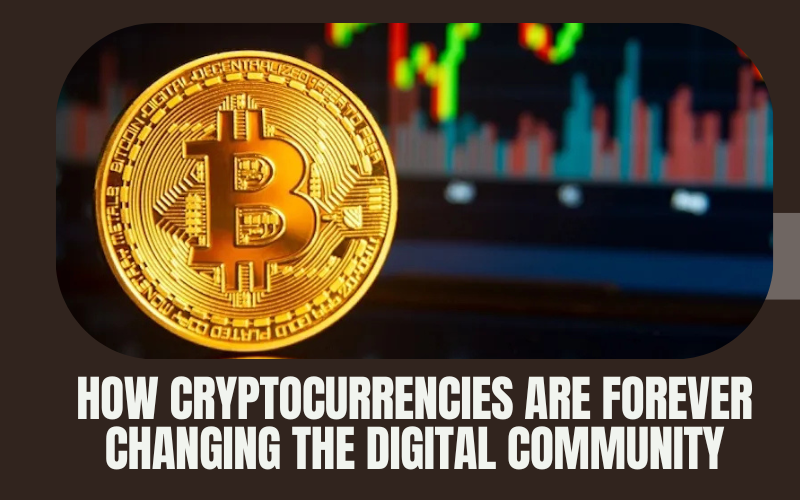Some of us may be able to recall when Bitcoin was first introduced to the public in 2009 by a mysterious figure named Satoshi Nakamoto. At the time, the concept of decentralised payments was nothing more than the stuff of fiction. Bitcoin was likewise labelled a quirky investment opportunity associated with a fair amount of downside risk. It is ironic how the ecosystem has evolved over the past 16 years.
Cryptocurrencies are rapidly becoming the staple of digital transactions, and we are only witnessing the beginning of what can certainly be called the next major leap forward in terms of modern payment systems.
We are left wondering what the next decade may have to offer. The only way to address this question is to highlight some of the ways in which crypto-friendly transfers have already transformed countless digital lifestyle trends. We can then take the next step, and predict how these unique tokens may usher in a new digital revolution. Let us begin by summarising the main advantages associated with cryptocurrencies.
The Notion of Decentralised Online Transactions
To be perfectly clear, some of the terminology attributed to cryptocurrencies can be difficult to grasp without prior experience. Many articles will focus on decidedly technical terms such as “DeFi”, “non-fungible token”, and “block rewards”. We will avoid these concepts for the sake of brevity. The good news is that it is still possible to understand the primary appeal of the cryptocurrency ecosystem.
Cryptocurrencies are unique due to the fact that transactions within the blockchain (a shared digital “ledger”) are entirely anonymous in nature. Unlike fiat payments, no personal data is attached to each statement. This is a major advantage for those who have become concerned about contemporary threats such as fraud, identity theft, and hacking.
Cryptocurrencies are also decentralised; signifying that they are not affected by external variables such as exchange rates, or interest rates set by central banks. This makes them an appealing alternative to fiat currencies. Furthermore, this very same sense of decentralisation provides a additional level of transparency. Transactions cannot be manipulated, falsified, or otherwise modified. This offers a heightened degree of security for e-commerce providers, and customers alike.
How Cryptocurrencies Have Begun to Dominate the Online Payment Community
To be perfectly clear, this article is not meant to disparage traditional fiat payment methods such as bank transfers, credit cards, and e-wallets. The intention is instead to highlight why cryptocurrencies have enjoyed so much attention over the past five years. In terms of client satisfaction, the “need for speed” immediately comes to mind.
Rapid Transfers
Unlike the vast majority of fiat transfers, cryptocurrency transactions can be completed within a fraction of the time that would normally be required (sometimes in a matter of minutes). This is yet another reason why the notion of the crypto sportsbook is gaining momentum. Customers will naturally gravitate towards lightning-fast gateways; especially when they are capable of offering the levels of anonymity mentioned in the previous section. Thankfully, the benefits do not end here.
Negating Geographic Boundaries
Take a moment to imagine that you wish to purchase a product manufactured in another region of the world. While this may indeed represent a straightforward process, fiat exchange rates can impact how much you will ultimately be required to pay. Cryptocurrencies are able to circumvent such shortcomings. It is relatively easy to perform transactions with universal tokens such as Bitcoin, Ethereum, and Litecoin. This takes much of the guesswork out of the equation; especially when compared to volatile exchange rates associated with currencies such as the United States dollar, the British pound, and the Euro.
A Kaleidoscope of Tokens to Select
Most readers are already at least moderately familiar with Bitcoin, as this token is still considered to represent the veritable “bedrock” of the cryptocurrency ecosystem. However, Bitcoin is just the tip of the iceberg when taking into account the number of available alternatives. Tether, Ripple, Solana, Dogecoin, and Bitcoin Cash are only a handful of other examples.
Other assets can be classified as “memecoins” and “altcoins”. While these tend to be highly speculative in nature, they still represent interesting opportunities for those who may be considering a foray into the cryptocurrency community to turn a quick profit. This also ushers in yet another point in terms of overall trends.

The Bigger Picture: How Cryptocurrencies are Influencing Digital Lifestyle
Trends
Now that we have examined the primary advantages attributed to cryptocurrencies from a functional point of view, what about the average consumer? How are these seemingly ethereal assets beginning to influence digital lifestyles around the world? You might be surprised to learn the answers to this seemingly straightforward question.
Online Gaming
One sector which has already begun to leverage the sheer scope of cryptocurrencies involves iGaming. This is the main reason why we are now witnessing the rise of crypto-powered bookmakers such as Sportsbet. Not only can clients access a wide range of payment options, but they will be able to enjoy levels of anonymity that traditional wagering platforms would be hard-pressed to provide. Note that this same observation can be used when discussing online casinos in general. Crypto-powered betting is indeed here to stay, and for good reason.
The E-Commerce Sector
Consumers have come to rely on sites such as Amazon and eBay since the halcyon days of the Internet. While these portals may have been novel in the 1990s, they now represent the bedrock of virtual retail solutions. This is why it is no surprise that cryptocurrencies are also making their presence known throughout the world of e-commerce.
Consumers can now access additional payment options alongside standard fiat transfers. While this adds another “string to the bow” in terms of online retail marketing, it also provides a sense of practical convenience to the average buyer. Most experts agree that cryptocurrency point-of-sale systems will become pervasive throughout the online retail sector in the coming years.
Real-World Payments
Let’s also remember that the digital lifestyle has begun to enjoy real-world applications. Multi-asset cryptocurrency payment providers now offer credit cards that can be used to make everyday purchases, to top-up personal accounts, and even to switch between tokens with a single click. As crypto payments function nearly identical to standard fiat transactions, users will not have to endure a steep learning curve. This is (arguably) one of the fastest-growing sectors, and it opens up a world of possibilities to the average consumer.
Investment Opportunities
It is currently estimated that just over 13 per cent of all Internet users now hold investments in at least one cryptocurrency. There are several reasons behind this increasing level of excitement. Some of the most practical include:
- Most cryptocurrencies represent highly liquid assets.
- Countless online trading platforms have become available.
- Extremely low transaction fees.
- Instantaneous access to the latest cryptocurrency news.
- Cryptocurrencies can often be used as hedges against other holdings.
It is also interesting to point out that we are not only referring to institutional-level investors in this sense. Average consumers have begun to leverage the advantages that cryptocurrency trading can offer. While there are certainly no guarantees that profits will be obtained, these assets can still add another proverbial “string” to the bow.
Startup Projects
The vast majority of traditional business models have taken into account the digital domain. From local hardware stores to multinational corporations, owners understand that the best way to reach their target audience is through the Internet. This is when cryptocurrencies can provide a potential advantage. Due to the secure and anonymous nature of these transactions, we are beginning to see tokens such as Bitcoin included within online point-of-sale (POS) systems. This offers an additional degree of convenience to tech-savvy consumers, and it illustrates that the business is remaining ahead of the curve.
An Ongoing Paradigm Shift
We can now see why cryptocurrencies have taken the digital community by storm. Might these payment methods eventually spell the end of tried-and-tested alternatives such as credit cards? Most experts do not believe that this will come to pass. However, it is still difficult to overstate the impact that cryptocurrency payments have already made. As these tokens become increasingly familiar to the public, we should expect them to become even more immersed within our digital lifestyles.
































